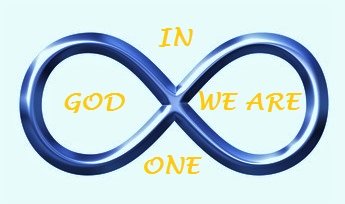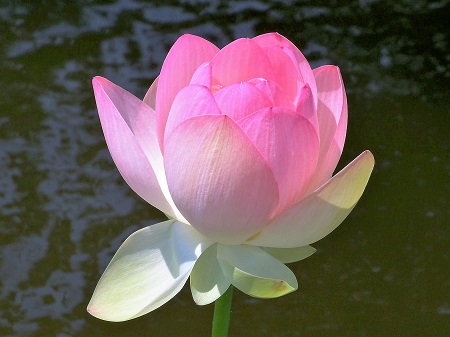The Enigma of Non-Duality: Understanding the Essence of Oneness
In the quest for understanding the nature of reality, one concept that has intrigued and mystified thinkers, spiritual seekers, and philosophers alike is non-duality. Rooted in ancient wisdom traditions, non-duality, or Advaita, offers a perspective that transcends the conventional dichotomies of existence. It suggests a profound truth: the ultimate reality is an indivisible oneness, beyond all forms of dualistic thinking. This page delves into the enigma of non-duality, exploring its principles, implications, and the pathways to experiencing this state of being.
The Essence of Non-Duality
Non-duality, derived from the Sanskrit term "Advaita," literally means "not two." It posits that the apparent separation between the self and the other, subject and object, and mind and matter is an illusion. At the heart of non-dualistic teachings is the assertion that all distinctions are superficial and that the true nature of reality is a unified whole.
In non-dualistic traditions, particularly in Advaita Vedanta, the self (Atman) and the ultimate reality (Brahman) are considered one and the same. This principle is succinctly captured in the Mahavakya (great sayings) of the Upanishads, such as "Tat Tvam Asi" (That Thou Art) and "Aham Brahmasmi" (I Am Brahman). These declarations highlight the core belief that the individual self is not separate from the universal consciousness.
Historical Context and Philosophical Foundations
The roots of non-duality can be traced back to the ancient Indian scriptures known as the Upanishads, composed around 800-200 BCE. These texts form the philosophical foundation of Hinduism and explore the nature of reality, the self, and the universe. The non-dual perspective was further elaborated by Adi Shankaracharya in the 8th century CE. Shankaracharya's commentaries on the Upanishads, Bhagavad Gita, and Brahma Sutras established Advaita Vedanta as a major philosophical system.
Non-dualistic ideas are not confined to Hinduism. Similar concepts are found in various spiritual traditions worldwide. In Buddhism, the notion of "emptiness" (Shunyata) in Mahayana teachings resonates with non-duality, emphasizing the interconnectedness of all phenomena and the absence of intrinsic separateness. Taoism in China, through the Tao Te Ching, speaks of the unity of all things in the Tao. Mystical traditions within Christianity, such as those expressed by Meister Eckhart, also reflect non-dualistic insights.
Experiencing Non-Duality
While non-duality can be intellectually understood, its true essence lies in direct experience. This experiential realization transcends conceptual thinking and can be approached through various spiritual practices:
- Meditation and Mindfulness: These practices help quiet the mind, allowing one to transcend dualistic thought patterns. In deep meditation, individuals may experience a state of pure awareness, where the distinction between the observer and the observed dissolves.
- Self-Inquiry: Pioneered by the sage Ramana Maharshi, self-inquiry involves asking the question, "Who am I?" This introspective process leads to the recognition that the true self is beyond the ego and is one with the universal consciousness.
- Contemplative Practices: Reflecting on non-dual teachings, scriptures, and philosophical texts can also facilitate an intuitive grasp of non-duality. Contemplative reading and discussion deepen one's understanding and pave the way for experiential insights.
- Spiritual Teachers and Communities: Guidance from enlightened teachers and engagement with like-minded seekers provide support and encouragement on the path to realizing non-duality. Sanghas (spiritual communities) create an environment conducive to inner exploration and growth.
The Implications of Non-Duality
The realization of non-duality has profound implications for one's perception of self, others, and the world:
- Transformation of Self-Identity: Recognizing the non-dual nature of reality shifts one's identity from the limited ego to the infinite self. This transformation brings about a sense of inner peace, freedom, and interconnectedness with all life.
- Compassion and Empathy: When the boundaries between self and other dissolve, a natural outcome is the emergence of compassion and empathy. Understanding that others are not separate from oneself fosters a deep sense of love and kindness towards all beings.
- Overcoming Fear and Suffering: The realization that one's true nature is beyond birth and death alleviates existential fears. Suffering, which arises from attachment and aversion, diminishes as one recognizes the transient nature of all experiences within the context of the eternal self.
- Living in the Present Moment: Non-duality emphasizes the importance of the present moment, where the unity of existence is directly experienced. This awareness leads to a more mindful and engaged way of living, free from the distractions of past regrets and future anxieties.
Challenges and Misconceptions
While non-duality offers a transformative perspective, it is not without challenges and misconceptions:
- Intellectualization: There is a tendency to intellectualize non-duality, reducing it to a mere philosophical concept. True understanding requires moving beyond the intellect to direct experience.
- Spiritual Bypassing: Some may use the idea of non-duality to bypass unresolved psychological issues or personal growth. It is essential to integrate non-dual insights with holistic self-development.
- Misinterpretation of Oneness: The notion of oneness can be misconstrued as homogeneity, ignoring the diversity and uniqueness of individual expressions within the unified whole. Non-duality acknowledges both the unity and diversity of existence.
Conclusion
The enigma of non-duality invites us to explore the depths of our being and the nature of reality beyond conventional understanding. It challenges us to transcend dualistic thinking and embrace the profound oneness that underlies all existence. By engaging in spiritual practices, seeking guidance from enlightened teachers, and nurturing a compassionate heart, we can move towards the realization of non-duality and experience the transformative power of recognizing our true nature.
Non-duality is not merely an abstract philosophical idea; it is a living reality that can be experienced here and now. As we delve into the mysteries of non-duality, we discover that the ultimate truth is not something distant and unattainable but the very essence of who we are. Embracing this truth, we find ourselves living more fully, lovingly, and harmoniously in the ever-present moment of now.

